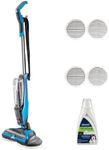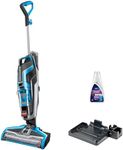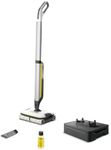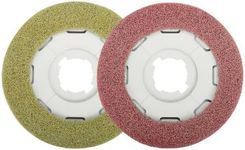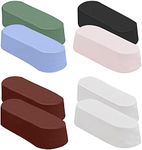Buying Guide for the Best Floor Buffers
Choosing the right floor buffer can make a significant difference in maintaining the cleanliness and shine of your floors. Floor buffers are essential tools for both residential and commercial spaces, helping to polish and clean various types of flooring. When selecting a floor buffer, it's important to consider several key specifications to ensure you get the best fit for your needs. Understanding these specifications will help you make an informed decision and achieve the best results for your floors.Motor PowerMotor power, measured in horsepower (HP), determines the efficiency and effectiveness of the floor buffer. A higher motor power means the buffer can handle more intensive tasks and larger areas. For light-duty residential use, a motor power of around 0.5 to 1 HP is usually sufficient. For commercial or heavy-duty use, look for a motor power of 1.5 HP or higher. Consider the size of the area you need to clean and the type of flooring to determine the appropriate motor power for your needs.
Pad SpeedPad speed, measured in revolutions per minute (RPM), affects how quickly and effectively the buffer can polish the floor. Lower speeds (around 175 RPM) are suitable for scrubbing and stripping floors, while higher speeds (up to 1500 RPM or more) are better for polishing and burnishing. If you need a versatile machine for various tasks, consider a dual-speed buffer that offers both low and high-speed settings. Match the pad speed to the specific cleaning and polishing tasks you need to perform.
Pad SizePad size, typically measured in inches, determines the coverage area of the buffer. Common sizes range from 13 to 20 inches. Smaller pads (13-15 inches) are easier to maneuver and are ideal for tight spaces or residential use. Larger pads (17-20 inches) cover more area quickly, making them suitable for large commercial spaces. Choose a pad size based on the size of the area you need to clean and the level of maneuverability required.
WeightThe weight of the floor buffer affects its stability and ease of use. Heavier buffers provide more downward pressure, which can enhance the polishing and cleaning effectiveness. However, they can be more challenging to maneuver, especially in smaller spaces. Lighter buffers are easier to handle but may require more effort to achieve the same results. Consider your physical strength and the type of flooring to determine the right weight for your needs.
Noise LevelNoise level, measured in decibels (dB), is an important consideration, especially for residential use or noise-sensitive environments. Quieter models are generally preferred for these settings. Check the noise level specifications and consider how much noise you can tolerate during operation. If you need to use the buffer in a commercial setting, ensure the noise level is acceptable for the environment.
Cord LengthCord length determines how far you can move the buffer without needing to switch power outlets. Longer cords provide more flexibility and convenience, especially in larger areas. Standard cord lengths range from 25 to 50 feet. Consider the size of the area you need to clean and the availability of power outlets to choose an appropriate cord length.
ErgonomicsErgonomics refers to the design and comfort of the floor buffer, including handle design, height adjustability, and ease of use. A well-designed buffer with ergonomic features can reduce fatigue and improve user comfort during extended use. Look for models with adjustable handles and intuitive controls to ensure a comfortable and efficient cleaning experience.
